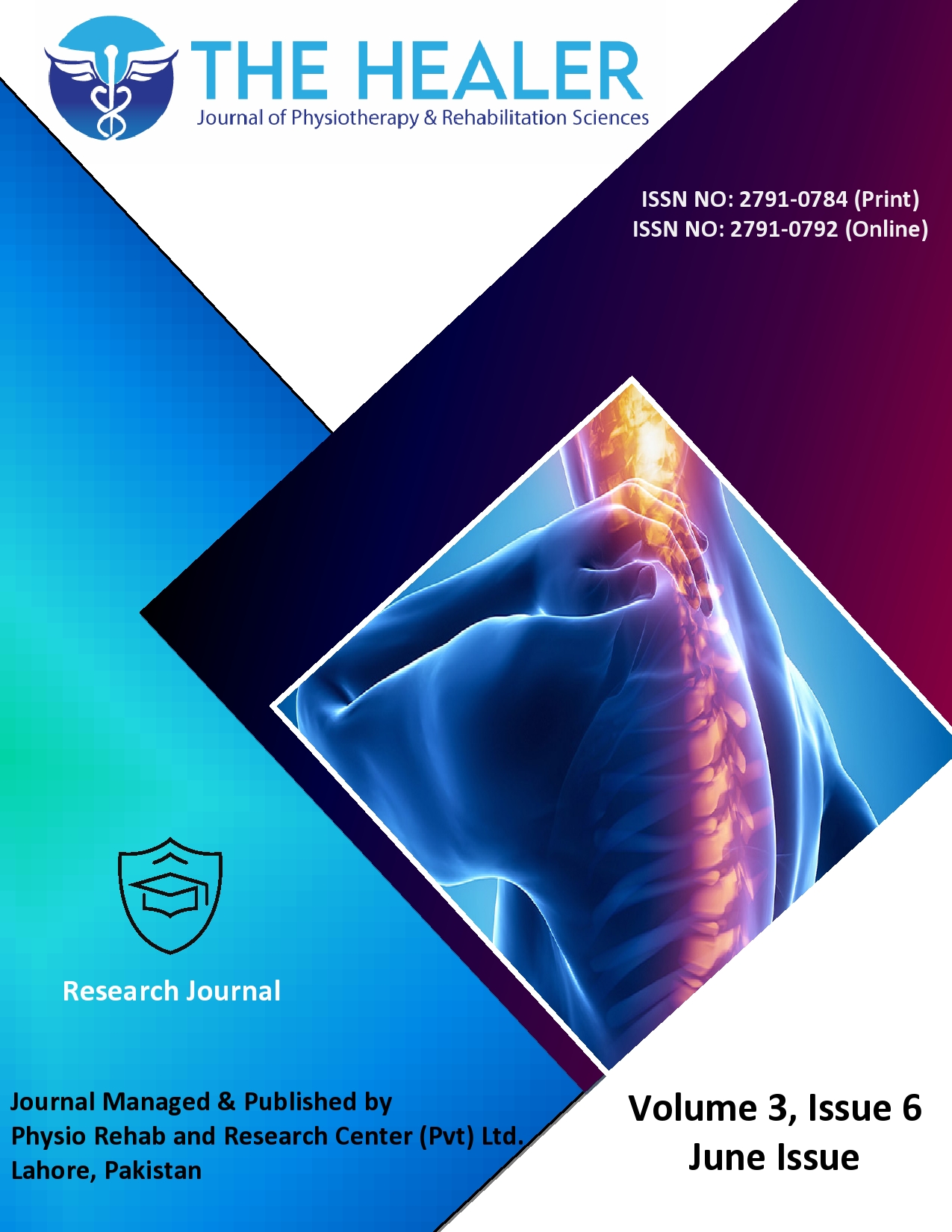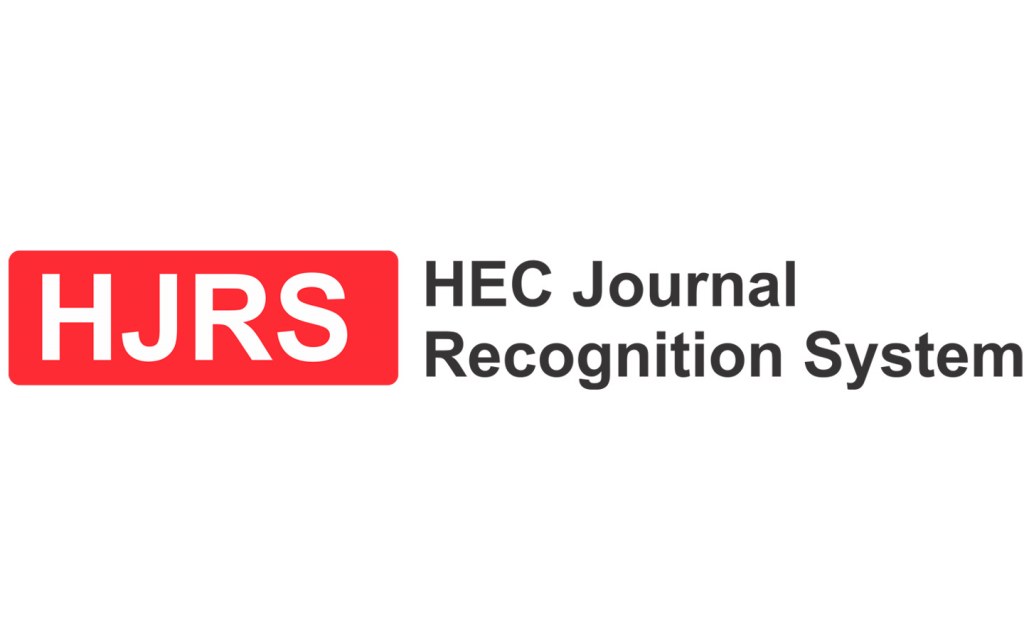Effects of Chest Physiotherapy for Removal of Mucus Secretions Among Mechanically Ventilated Patients in Intensive Care Unit
Chest Physiotherapy Among Ventilated Patients
DOI:
https://doi.org/10.55735/hjprs.v3i6.156Keywords:
intensive care unit, mechanical ventilation, percussion, postural drainage, secretionsAbstract
Background: A mechanical ventilator is used to help the patient breathes when he cannot breathe on his own due to severe illness. Chest physiotherapy techniques like percussion, postural drainage, vibrations and suctioning of secretions help to manage the retained secretions and clear secretions, improve oxygenation and prevent pulmonary complications. Objective: To determine the effects of chest physiotherapy for the removal of retained secretions among mechanically ventilated patients in the intensive care unit. Methods: This quasi-experimental study was carried out on a sample of 110 mechanically ventilated patients, using non-probability convenient sampling. The peak inspiratory pressure, tidal volume, pulse oximetric saturation, amount of secretions removed by suctioning, respiratory sounds and saw tooth pattern were assessed before and after treatment. The treatment technique used was percussion along with postural drainage positioning and suctioning. The quantitative variables were presented as mean, standard deviation, range and histogram. Normality was checked by Kolmogorov Smirnov test. The categorical variables were evaluated as percentages, frequencies, cross tabulation, bar and pie charts. An alpha level of 0.05 was chosen for significance. Data were analyzed by using a parametric test (paired-sample t-test), Pearson chi-square test and Fisher’s exact test. Results: By using paired sample t-test, the results of the present study showed that the difference in pre-test and post-test values of peak inspiratory pressure, tidal volume and oxygen saturation were statistically significant (p-value=0.000). The mean score of secretions volume removed during suctioning pre-test was 73.66±92.60 and post-test was 87.18±103.86. Analysis showed that there is an association between pre-test and post-test respiratory sounds and sawtooth patterns (p-value=0.00). Conclusion: This study showed that after chest physiotherapy, more secretions were removed by suctioning, pulse oximetric saturation and tidal volume were improved and significant change in peak inspiratory pressure was found. Respiratory sounds and sawtooth patterns were absent after chest physiotherapy.
References
Sole ML, Bennett M, Ashworth S. Clinical indicators for endotracheal suctioning in adult patients receiving mechanical ventilation. American Journal of Critical Care 2015; 24(4): 318-24.
Li Bassi G. Causes of secretion retention: patient factors, ventilation, devices, drugs. Current Respiratory Medicine Reviews 2014; 10(3): 143-50.
Powell J, Garnett JP, Mather MW, et al. Excess mucin impairs subglottic epithelial host defense in mechanically ventilated patients. American Journal of Respiratory and
Critical Care Medicine 2018; 198(3): 340-9.
Guglielminotti J, Alzieu M, Maury E, Guidet B, Offenstadt G. Bedside detection of retained tracheobronchial secretions in patients receiving mechanical ventilation: is it time for tracheal suctioning? Chest 2000; 118(4): 1095-9.
Kluayhomthong S, Ubolsakka-Jones C, Domthong P, Reechaipichitkul W, Jones DA. The immediate effects of breathing with oscillated inspiratory and expiratory airflows on secretion clearance in intubated patients with cervical spinal cord injury. Spinal Cord 2019; 57(4): 308-16.
Meawad MA, Abd El Aziz A, Obaya HE, Mohamed SA, Mounir KM. Effect of chest physical therapy modalities on oxygen saturation and partial pressure of arterial oxygen in mechanically ventilated patients. The Egyptian Journal of Hospital Medicine 2018; 72(8): 5005-8.
Cross JL, Elender F, Barton G, et al. Evaluation of the effectiveness of manual chest physiotherapy techniques on quality of life at six months post exacerbation of COPD (MATREX): a randomised controlled equivalence trial. BMC pulmonary medicine 2012; 12(1): 1-9.
Yousefnia-Darzi F, Hasavari F, Khaleghdoost T, Kazemnezhad-Leyli E, Khalili M. Effects of thoracic squeezing on airway secretion removal in mechanically ventilated patients. Iranian journal of nursing and midwifery research 2016; 21(3): 337.
REIS MS, REIS HV, SOBRAL DT, MARIA A, CATAI AB-S. Journal of Respiratory and CardioVascular Physical Therapy. Jour Resp Cardiov Phy Ther 2016; 5(1): 13-21.
Mackenzie CF, Shin B. Cardiorespiratory function before and after chest physiotherapy in mechanically ventilated patients with post-traumatic respiratory failure. Critical Care Medicine 1985; 13(6): 483-6.
Denehy L, Berney S. Physiotherapy in the intensive care unit. Physical Therapy Reviews 2006; 11(1): 49-56.
Castro AA, Calil SR, Freitas SA, Oliveira AB, Porto EF. Chest physiotherapy effectiveness to reduce hospitalization and mechanical ventilation length of stay, pulmonary infection rate and mortality in ICU patients. Respiratory medicine 2013; 107(1): 68-74.
Dexter AM, Scott JB. Airway management and ventilator-associated events. Respiratory Care 2019; 64(8): 986-93.
Longhini F, Bruni A, Garofalo E, et al. Chest physiotherapy improves lung aeration in hypersecretive critically ill patients: a pilot randomized physiological study. Critical Care 2020; 24(1): 1-10.
Cork G, Camporota L, Osman L, Shannon H. Physiotherapist prediction of extubation outcome in the adult intensive care unit. Physiotherapy Research International 2019; 24(4): e1793.
Branson RD. Secretion management in the mechanically ventilated patient. Respiratory care 2007; 52(10): 1328-47.
Clini EM, Antoni FD, Vitacca M, et al. Intrapulmonary percussive ventilation in tracheostomized patients: a randomized controlled trial. Intensive care medicine 2006; 32(12): 1994-2001.
Spapen HD, De Regt J, Honoré PM. Chest physiotherapy in mechanically ventilated patients without pneumonia—a narrative review. Journal of thoracic disease 2017; 9(1): E44.
Jubran A, Tobin MJ. Use of flow-volume curves in detecting secretions in ventilator-dependent patients. American journal of respiratory and critical care medicine 1994; 150(3): 766-9.
Konrad F, Schreiber T, Brecht-Kraus D, Georgieff M. Mucociliary transport in ICU patients. Chest 1994; 105(1): 237-41.
Barker M, Adams S. An evaluation of a single chest physiotherapy treatment on mechanically ventilated patients with acute lung injury. Physiotherapy Research International 2002; 7(3): 157-69.
Suh M, Heitkemper M, Smi C-K. Chest physiotherapy on the respiratory mechanics and elimination of sputum in paralyzed and mechanically ventilated patients with acute lung injury: a pilot study. Asian nursing research 2011; 5(1): 60-9.
Care AAfR. Endotracheal suctioning of mechanically ventilated patients with artificial airways 2010. Respiratory Care 2010; 55(6): 758-64.
Batean J, Newman S, Daunt KM, Sheahan NF Pavia D, Clarke S. Is cough as effective as chest physiotherapy in the removal of excessive tracheobronchial secretions? Thorax 1981; 36(9): 683-7.
Moreira FC, Teixeira C, Savi A, Xavier R. Changes in respiratory mechanics during respiratory physiotherapy in mechanically ventilated patients. Revista Brasileira de Terapia Intensiva 2015; 27: 155-60.
Ntoumenopoulos G, Presneill J, McElholum M, Cade J. Chest physiotherapy for the prevention of ventilator-associated pneumonia. Intensive care medicine 2002; 28(7): 850-6.

Downloads
Published
How to Cite
License
Copyright (c) 2023 The Healer Journal of Physiotherapy and Rehabilitation Sciences

This work is licensed under a Creative Commons Attribution 4.0 International License.
CC BY












